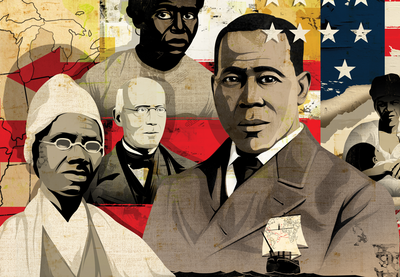Students should know that enslaved people hated being enslaved, and resisted bondage in many ways.
What Else Should My Students Know?
5.A Enslaved people wanted to escape to freedom. Although it was very difficult and largely impossible, some did manage to escape.
5.B Laws, including the U.S. Constitution, made slavery legal and escaping illegal. Enslaved people were often hunted and returned to slavery.
5.C Many people who escaped slavery went on to fight for freedom for all enslaved people.
5.D Enslaved people resisted slavery to try and obtain some freedom in the midst of their enslavement. Resistance took many forms, ranging from everyday actions like slowing down work to armed rebellion.
How Can I Teach This?
- Students may not think about how learning to read and write European languages could be forms of resistance. Trade books such as Midnight Teacher and Poet: The Remarkable Story of George Moses Horton show students how difficult and important it was for enslaved people to learn European languages.
- Cultural practices among enslaved people were often forms of resistance. Students can learn about ceremonies like “jumping the broom,” developed when marriage was forbidden, using a text like Ellen’s Broom. Age-appropriate books such as The Patchwork Path, The Secret to Freedom and Follow the Drinking Gourd show how art forms like quilting and song served a dual purpose, offering directions for escape.
- To show how difficult it was to escape slavery, students can read Henry’s Freedom Box or Seven Miles to Freedom, identifying the distances covered in those books on a map and comparing them to the distances that they cover every day.
- The Underground Railroad can captivate students at this age, and when mixed with books like Crossing Bok Chitto, teachers can use escape stories to show that not every person supported slavery. By identifying the ways that some free people helped enslaved people find freedom, teachers can encourage students to think about how they can take part in helping others obtain liberation from oppression.
- It is important to show students that many formerly enslaved people became fierce and influential advocates for abolishing slavery, including Frederick Douglass.
